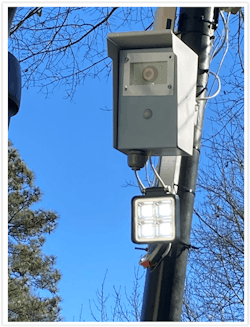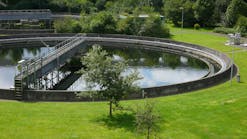John Collings is the founder and past president of Mission Communications and is currently president of Memoreyes Municipal, a video/SCADA systems provider. He can be reached at [email protected].
As a group, water and wastewater utilities, public or private, have responsibility for an enormous amount of remote, unattended facilities that have to operate 24/7/365. That means a lot of people in a lot of vehicles driving a lot miles and taking care of a lot of facilities. This article will show how SCADA’s evolution allowing more and more data has given personnel more and better information to do their jobs quicker, safer and less expensively.
A History of SCADA
Supervisory Control and Data Acquisition (SCADA) for “remote telemetry” began with the advent of phone lines and long-range radio. Suddenly, a central plant facility could get an “alarm” when equipment failed. Initially those alarms were limited to a single piece of information: station OK, or not OK. This was then followed by a drive to the station to figure out what had gone wrong if it were flagged as such.
Next, telephone line based “auto-dialers” provided the ability to accept trouble inputs to indicate the nature of the local trouble. Now, various alarms like power failure, high level, low pressure, etc. were transmitted to a pre-defined phone number and where pre-recorded messages were played defining the trouble. Now a central facility/utility had clues on how to prepare to address the trouble. But phone lines were not cheap and certainly were not available at many of the remote locations of the water and wastewater systems.
Long range radio had been around almost as long as phone lines but equipment was primarily oriented to “voice” style communications for outbound entertainment or public safety (police, fire, medical). While there was “Morse code” style communications it still was not “digital” in nature as the transmission equipment was still oriented toward human-to-human communications, the spoken word.
Enter the Digital Age
The sixties, with the invention of the computer, saw the development and emergence of digital communications; computer to computer communications. Information reduced to, and represented by, ones and zeros as “data."
Suddenly, a million things could be represented by a relatively short string of 1s and 0s. For example the below binary sequence could mean "Low pressure alarm at station 52 and water pressure at 35 PSI."
0010110010010111 1011100101011110
As a result of this step, computer “languages” were born, this gave birth to computer communications. Devices could now detect and communicate water level, pressures, and flows, and communicate that data to another location.
What is Modem?
MOdulate / DEModulate (MODEMs) were invented to send 1s and 0s over phone lines and radio waves in defined formats to communicate, process, store and display on screens. We now call these devices and systems SCADA systems, with human to machine interfaces (HMI).
Initially, modems could send 300 1s and 0s per second, then the next year 1,200, then 2,400 etc. This is slow by today’s standards but is still a lot of data. Phone lines worked, but were still expensive and unavailable at lots of locations. Radio modems promised and delivered a lower cost means of sending and receiving data over the wide areas served by utilities. And yet, installing a wide area radio system is still not cheap and the user has to maintain it.
Given the state of technology in the 70s, 80s and 90s, the most cost effective and reliable wide area radio communications networks were called “poll and respond” networks. Every field device has an “address”; a name such as Device 1, Device 2, etc.; a central “transceiver” (transmit/receive device); and a “base station” that knows all field device addresses.
How a Radio Frequency Network Operates
The entire network operates on a single radio frequency, typically in the 300 to 400 Mhz (millions of cycles per second) range. Only one device can talk on the frequency or network at a time. Radio frequencies were allocated by governments for these specific utility style communications in addition to police, fire, medical and management needs. The 900 Mhz range is also frequently used as well.
These SCADA telemetry networks operated by the central transceiver broadcasting (polling) a single device’s address to all field devices and then allowing a brief time for that particular device to use the common, single frequency to respond with its SCADA data (alarm, pump running, current level, etc.). Then, after the allotted time, the central transceiver polls the next field device for its data, and so on.
Depending on the technology and the number of field devices in the polling loop, you could get your SCADA data in 30 seconds to 10 minutes. Yet, a central location could now effectively monitor hundreds of remote water and wastewater sites. This architecture has a limitation in that it prohibits large amounts of data from a single location. This is good for basic telemetry, but incapable for any other big data applications.
3 Elements of Radio to Know
It is important to understand a few things about radio.
- In general, the lower the radio frequency (cycles per second) the further they go through the air.
- The lower the frequency also means the a lower number of 1s and 0s can be sent in a second.
- There is a fixed number of radio frequencies in the world.
There is only one 96.5 on your FM dial, but depending upon how much power is pushed into an antenna will determine how far that radio wave frequency or signal will travel through the air to another antenna. Consequently, if care and planning is done you can have 96.5 WABC in New York City, and 96.5 WXYZ in Philadelphia and they do not interfere with each other because their range is limited.
Radio Frequency Reuse & Switching
This is why frequency reuse becomes extraordinarily important. You can be talking on CB Channel 9 and 10 miles down the road someone else can be on the same Channel 9 frequency and you do not hear each other. A CB radio only has 5 watts of power, which means the signal only goes through the air about 2 to 3 miles before it becomes so weak that it cannot be received by another radio. Public radio stations can have 50,000 watts of power, but typically, they only use a few thousand. A hand-held cell phone has six-tenths of 1 watt of power at maximum and typically operates at one-eighth watt or less.
The original cellular network design had a grand total of 832 channels over the entire U.S. To reiterate there were only 832 channels. With relatively few frequency channels, the cellular network works well using two key principals: frequency reuse and frequency switching. Real time transmit power in control of your hand-held cell radio (range control) gets coupled with near instantaneous cell site frequency switching to enable those 832 channels to be reused hundreds to thousands of times in a city-wide system. This is how thousands of simultaneous phone calls occur at any given moment.
Today’s emerging 4G/5G cell networks still operate on the frequency reuse and switching principals, but now they also use dozens of new and reallocated frequency bands. Cellular internal modem technology has now gone from 300 bits per second to 20 billion bits per second, and it is still going up.
SCADA telemetry networks will not go away but they certainly can be augmented by new radio data networks. The emerging cellular and satellite networks can do that now, at a reasonable cost.
Do We Need This Much Data?
So, how much data do we need? There are only so many alarms, pressures and sites. This author suggests that more data, more targeted data, is always better. It simply begets better information, and B=better information leads to better decisions and more efficient actions. And that means more responsible management of the public utility, which simply is better. The question is what new kinds of data uses are possible?
What if you could “feel” a pipe, pump, pump motor or backflow valve from anywhere? Every operator knows the value of putting your hand on a pump and “feeling” it, or listening to a check valve leak. What if you could “see” every and any remote site area instantly? A facility manager could see if a person has fallen down, if water is spilling, or how a job is progressing. Maybe just simply looking around a site to see what is going on and taking a picture for a report.
Given the massive increases in the amount of data transmission possible — and how it is only increasing — new forms of data and information are on the way. For instance, physical and acoustic vibration “wave forms” could be sent to let you literally “feel” and “listen” to remote site assets. Pictures and video, while they take thousands of times more data than typical SCADA, allow access to new levels of information to more fully discover what is happening at remote sites.
More information will not stop remote site visits, but it will lessen them and the gas, manpower and other costs needed to support them. More data is coming and it will give personnel more and better information to do their jobs quicker, safer and less expensively.


